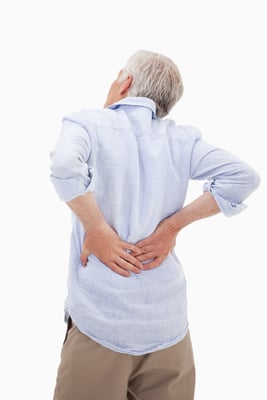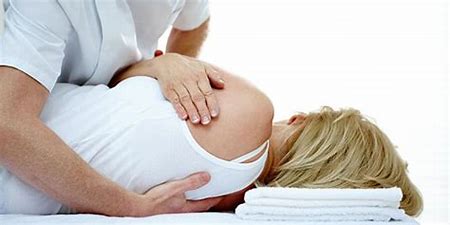Osteopathy
Prevention and Rehabilitation
PREVENTION
Treat long-term issues or prevent further problems

- Chronic disk bulging or herniation
- Tendinitis, bursitis
- Neck and back pains
- Motor control deficits in special needs
- Headaches, migraines, tension
- Vertigo, dizziness, tinnitus
- Old head injuries
- TMJ pain
- Digestion issues: acid reflux, constipation, IBS
- Menstrual cramps, dysmenorrhea, pelvic pain
- Nerve entrapments
- Stress reduction, anxiety, mental health
- Immune system deficits and disorders
REHABILITATION
Treat current injuries or concerns

- Disc injury, spinal injury
- Nerve compression or inflammation
- Joint or bone injuries
- Concussion, head trauma injury
- Any other musculoskeletal injury
- Illness
What is Osteopathy (generally)?
It is a trained method whereby the Osteopathic practitioner uses their hands to restore dysfunction from injury, or long-term damage or conditions. As part of the Integrative team they are most effective as a whole-body approach to aid healing localized problems of the back, neck, hips and other joints. An Osteopath can assess the problems; help you prevent further damage, reduce pain and promote healing.
See below FAQ's more detailed information. If you are not ready for Osteopathic treatment, try: Bowen Therapy
*supported by most Insurance benefits
What people are saying:
"Christian has such a calm and peaceful demeanour that you start to relax as soon as you see him! If you have any kinks or soreness he will help relieve your tension. I highly recommend you try his osteopathic services." P.B
"The most compassionate, knowledgeable, supportive therapist. I would recommend to anyone!" G.R
"My son had his first session with Christian for osteopathy and it was wonderful. He helped my son and I understand his issues in depth and gave helpful tips as he worked with him. He is very friendly, calm, and knowledgeable - I highly recommend him" S.B
"Christian is an excellent osteopath! His treatments have really helped me recover from a painful neck, shoulder and back issue that was previously debilitating. Christian is both very knowledgeable and personable, and ensures that he effectively addresses the issues brought to him by his patients." D.V
"This was my first session but I already feel much better and more informed. Very professional, friendly and personable." A.WL
ASK THE OSTEOPATH
Some commonly asked questions and answers
The Canadian College of Osteopathy defines Osteopathy as a hands on natural medicine that restores the normal function of the body by treating the causes of pain and imbalance. There are no medications or remedies given or surgery used when treating the body. Osteopathy uses mainly hands on techniques that help to regain balance and decrease pain and tightness in the body. To understand this more, osteopathy is based on four basic principles:
- Each body’s structure supports the body’s functions and vice versa.
- The natural flow of the body’s fluids – lymphatic, blood, synovial, digestive juices and cerebrospinal – must be preserved and maintained.
- The physical, emotional, social, spiritual, and cognitive systems of the body work in unity and harmony.
- When the body has no restrictions or injuries, it has the inherent ability to heal itself.
Osteopathic Manual Practitioners sees a person as an integrated whole and that the body has an innate, natural ability to self-regulate and to heal itself. When all of the body’s components are in balance, a person is complete and in total health. Osteopathic Manual Practitioners work to restore the normal physiological function of interrelated body structures and systems, enhancing the body’s natural ability to heal itself.
The key factor that allows this healing to occur is the free circulation of the all the body’s fluids as mentioned in the previous section. The body's fluids are involved in all facets of life, and serve as mediums for excreting all the byproducts of digestion and cellular respiration.
Any obstruction that impedes this circulation of fluids is the focus of osteopathic assessment and treatment. These impediments may take the form of structural or non-structural blockages. These blockages may be due to the aging process, trauma, accident, illness, surgical scarring, childbirth, repetitive activity, the prolonged influence of gravity on posture, or the cumulative effects of mental, emotional, physical, and spiritual stresses. Over time, the body gradually loses its ability to efficiently self-regulate and self-heal.
The symptoms from these blockages may manifest themselves near the original site of occurrence or, more frequently may be felt far from the site of occurrence. In addition, many people have multiple overlapping injuries and conditions. For this reason, the Osteopathic Manual Practitioner must assess the whole body. Although treatment may be directed toward several specific areas, the effect of that treatment is often felt throughout the body. It is for this reason that the Osteopathic Manual Practitioner also treat the whole body. Therefore, the Osteopathic Manual Practitioner considers the whole patient, recognizing that each individual has unique mental, emotional, and physical conditions.
Osteopathic Manual Practitioners work cooperatively and in communication with physicians and other health care professionals.The aim of the Osteopathic Manual Practitioner is to optimize the self-healing mechanisms of the body by taking away the blockage, imbalances and pain. The frequency of visits is based on your assessment. Adequate time between visits is required to allow your body to accept and integrate the changes that occur from one visit to the next.
Osteopathic care is an efficient and effective solution, helping clients return to health and to their normal activities. Taking care of the body as a whole ensures that the whole body is in its most optimal state. In the most optimal state, the body is back in balance and every system moves and flows normally. Osteopathic treatment can help many conditions, problems and injuries of the body such as:
- Feeding Issues i.e. TMJ
- Acute or Chronic Pain
- Digestive Problems i.e. IBS
- Urinary Problems i.e. incontinence
- Muscle Spasms and Strains
- Ligamentous and Joint Sprains
- Respiratory Difficulties
- Postural Problems
- Repetitive Strain Injuries i.e. tendonitis
- Work Injuries
- Sport Injuries
- Neuropathy
- Pelvic Problems
- Cranial Problems i.e. dizziness, headaches, vision problems
- Pregnancy and Birth Issues

